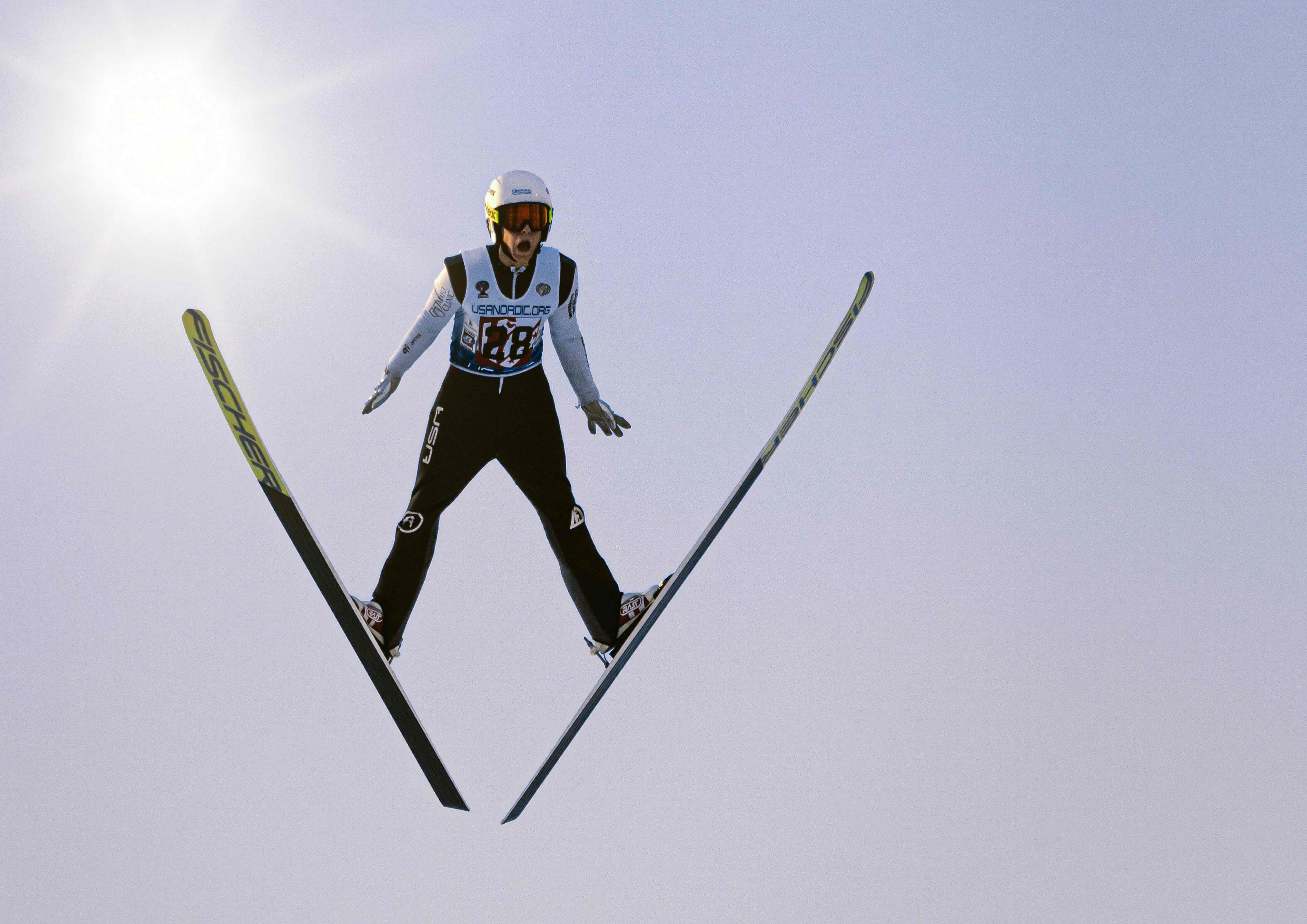
Dance is an aesthetic sport – a routine-oriented sport scored subjectively on artistry and technique. Whether it’s a competition, a convention, or an audition for an intensive or a school, judges look closely for pointed feet, high extensions, and performance quality to assess who the best dancers are.
That’s not all judges look for. On the majority of score sheets, you will see a criterion that doesn’t quite mesh with technique and artistry.
“Lines”. “Natural Facility”. “Proportions”. “Physicality”. Regardless of what phrase is used, they’re all assessing the same thing – the dancer’s weight.
This weight element might be more subjective or subtle (for example, “lines” or “natural facility” existing in the fine print on the back of a rubric) or it might be more objective (an infamous example would include the Vaganova Ballet Academy’s height-weight chart1, which lists the ideal weight for a 5’5” female dancer as 100lbs). Regardless of how obviously it’s presented, dance competitions and auditions across the country perpetuate an idea that being thin or small is a measure of merit in dance and can be pursued as part of gaining a “competitive advantage.” From a safeguarding perspective, this weight element is profoundly problematic, and its removal is imperative to ensure safety in the sport. This weight element puts athletes at increased risk of and can contribute to experiences of physical abuse, psychological abuse, and sexual abuse, and negatively impacts their well-being and longevity as dancers.
When weight – especially low weight – is made part of competition through its existence as a scorable metric, body talk, body criticism, and fat shaming from coach to athlete becomes acceptable and part of the culture. Therefore, weight control (or the pressuring of an athlete to lose or maintain a certain amount of weight) becomes an appropriate coaching tactic that helps athletes comply with sports standards. Weight control has significant psychological consequences for athletes – aesthetic sport athletes (like dancers) in particular report low self-esteem, low-performance confidence, high body dissatisfaction, and higher rates of eating disorders – and has been repeatedly cited as psychological maltreatment2. Intentionally subjecting athletes to this level of harm is abusive.
Weight control’s negative psychological consequences are often worsened by the adults in the sporting environment, as instructors who pressure dancers to lose weight exacerbate existing power imbalances and authoritarian climates in their studios. Athletes are often taught to fully trust coaches in order to succeed in sport. Consequently, when the weight element exists in a sport’s culture (like in dance), coaches who already expect to go unquestioned in the studio can further extend their level of control over athletes to include body talk and weight control. Authoritarian leadership – which, in aesthetic sports, is often characterized by favoritism and punishment – negatively impacts athletes.
Athletes themselves state that these climates worsen team dynamics – for example, preferential treatment or group punishments due to one athlete’s perceived mistake can breed resentment among a team. Limited autonomy is also a common theme among athletes who are in highly authoritarian sport settings – in an environment where persistent effort is encouraged to win, yet coupled with fear and the potential for punishment, it’s easy for athletes to eventually believe their day-to-day work or ability doesn’t matter. If the weight element were eliminated from dance, it’s reasonable to believe that the perceived need for authoritarian leadership in studios and high control over dancers would be reduced. This could incite a broader cultural shift towards healthier and more sustainable coaching practices within dance.
Burnout, a form of physical and emotional exhaustion caused by prolonged stress associated with demanding sport climates3, is worsened by the weight element in dance. Factors that contribute to burnout – namely, consistent criticism from adults, low self-esteem, injury, and low perceived autonomy – are all related to weight in dance. This is reflected among dancers and other aesthetic sport athletes, where burnout is high. Burnout is also commonly reported in athlete narratives on their experiences with high-control sporting environments and sexual abuse in sport.
Burnout, unfortunately, limits the likelihood of an athlete reporting abuse, as athletes who are abused and experience burnout as a result are more likely to quit the sport than report it. Eliminating weight from dance has the potential to reduce burnout and increase the likelihood of dancers reporting incidents of abuse, giving more dancers the chance to seek justice and hold abusers accountable for their harmful actions.
Weight control not only emotionally harms dancers, but it can cause substantial physical harm as well. Weight control in and of itself is considered a form of physical maltreatment2 due to its heightened level of potential harm to athletes. Athletes in environments where body and weight are constantly overemphasized report increased levels of eating disorders and weight-related health conditions, including low energy availability (LEA) and relative energy deficiency in sport (RED-S5). These conditions are physically devastating for dancers, with symptoms including loss of menstrual cycle, osteoporosis, and decreased performance due to fatigue6. Injuries in aesthetic sports are consistently related to low bone density and low body weight of athletes7,8, including the aforementioned weight-related health conditions like RED-S. Eating disorders often have extreme long-term physical consequences, including death – up to 10% of people with anorexia will die due to the disease within 10 years of receiving a diagnosis9. No alleged “competitive advantage” should have a mortality rate attached, and the fact that coaches in dance are routinely willing to risk a dancer’s long-term physical well-being – and life – to possibly receive a point over a competitor is reflective of a deeply unhealthy and unsustainable sporting environment. If less weight pressure existed in dance, we would see fewer weight-related health conditions, fewer injuries, and fewer physically detrimental eating disorders. Dancers could instead enjoy their sport with a lower likelihood of career-ending injury or long-term illness.
Weight control is also commonly reflected in athlete narratives on sexual abuse, and that’s no coincidence. The weight element in dance is a criterion that rewards athletes who comply with the preconceived standard of what a dancer looks like – small, thin, and conventionally attractive. All three characteristics are risk factors for sexual abuse. Those who develop the physical and mental conditions associated with weight control are additionally at risk of sexual abuse, as having a disability or health condition is considered a risk factor. Furthermore, perpetrators of sexual abuse seek out children who are more “attractive” to them, and creating environments where body talk and weight critique are “part of the sport” may simultaneously foster environments where perpetrators of sexual abuse can infiltrate the sport and victimize dancers more easily. Allowing adults in the dance space to openly talk about how compliant dancers are (or aren’t) with the existing standard of attractiveness blurs the boundary on what’s acceptable; perpetrators who want to victimize athletes may fly under the radar of other adults because this kind of talk is considered ‘normal’ within the realm of the sport. Part of the grooming process is desensitization to sexual content 10,11, which, in this context, could easily include inappropriate comments on attractiveness or looks since dancers may not consider this kind of talk unacceptable. Authoritarian climates that utilize weight control in coaching continue to compound risk, as authoritarian leadership is a risk factor for sexual abuse. On a broader level, conditioning athletes to be “attractive” to the judges is a widespread form of objectification that limits dancer autonomy – when we treat dancers like objects that just need to look pretty and win, dancers lose personhood – and serves as an additional risk factor for sexual abuse. If the weight element in dance were removed, sexual abuse risk would decrease, perpetrators may be more dissuaded from abusing dancers, and dancers would have increased autonomy that would promote healthier outcomes for all.
If one form of abuse occurs, the risk of other forms of abuse increases – in fact, the majority of athletes who report being abused in the sporting context will report misconduct in multiple forms. 12. Weight control’s connection to maltreatment in all forms and on all levels implies that, if the weight element of dance were removed from the sport, the overall abuse risk in dance would decrease.
Dancers deserve to exist in a sport that encourages healthy habits and actively follows best practices for reducing abuse risk. The current relationship between weight and dance directly harms dancers and contributes to broader abuse risk. If weight were eliminated from dance, we would see dancers who are physically and mentally healthier, who could have longer careers, and could further the sport for future generations. Authorities in dance – such as competition organizers and company owners – should eliminate the weight element from their scoring to promote not just safe and healthy athletes, but to reduce sexual misconduct in dance.
For additional information and support, please visit our resources, current events, and blog. If you require immediate assistance or support, please visit our crisis resources.
Annelise Ware, MHS
Dancer
- https://melmoth.blog/post/142675479933/vaganova-ballet-academy-heightweight-requirement
- https://bjsm.bmj.com/content/54/1/4
- https://www.nata.org/nata-now/articles/burnout-athletes#:~:text=Burnout%20is%20a%20response%20to,athlete%20at%20risk%20for%20burnout.
- https://bjsm.bmj.com/content/54/1/4
- https://pmc.ncbi.nlm.nih.gov/articles/PMC8912784/#sec2-nutrients-14-00986
- https://pmc.ncbi.nlm.nih.gov/articles/PMC7483688/
- https://pubmed.ncbi.nlm.nih.gov/21068571/
- https://link-springer-com.proxy1.library.jhu.edu/article/10.1007/BF03325136
- https://www.eatingdisorderhope.com/information/anorexia/anorexia-death-rate#ib-toc-anchor-0
- https://rainn.org/news/grooming-know-warning-signs
- https://www.weridetogether.today/blog-posts/grooming-series----part-1
- https://pmc.ncbi.nlm.nih.gov/articles/PMC10170556/#:~:text=Results%20highlighted%20three%20different%20profiles,tailored%20prevention%20and%20intervention%20measures.



-min.jpg)
